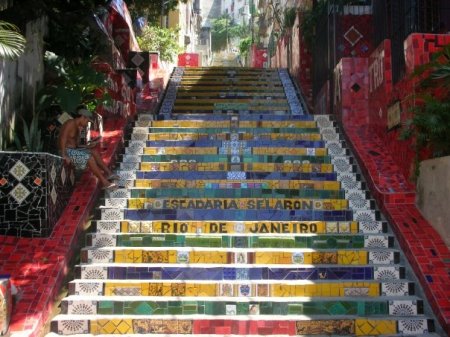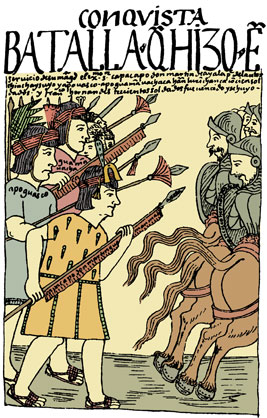
Jorge Selarón was born in Chile in 1947. He traveled, lived and worked as a painter and sculptor in over 50 countries around the world before arriving and deciding to settle in Rio de Janeiro in 1983.

In 1990, Selarón began renovating a dilapidated stairway that ran along the font of his house. At first, neighbours mocked him for his choice of colours as he covered the steps in fragments of blue, green and yellow tiles – the colours of the Brazilian flag. It was a tribute to the Brazilian people.

It started out as a side-project to his main passion, painting, but soon became an obsession. It has turned out to be the most original stairway in the world: 125 meters high with 215 steps. It contains over 2,000 different tiles from more than 60 countries.

The tiles are constanlty changing, a unique technique, which results in a special energy that brings the work of art to life. Selarón considers the work as “never complete,” like life, art is constantly changing.

It became a madness as many times he had his hands covered in blood, with calluses, and pain. He pressed on even when he was without money. At times he ate little, his phone was cut off, and he was threatened to be evicted from his house due to being unable to afford living costs.

He sold many paintings and accepted contributions from locals and travelers to continue his work. It was long and exhaustive work but he continued on and eventually covered the entire set of stairs in tiles, ceramics and mirrors.

Of the 2000+ tiles, 300-oddly enough are hand painted by Selarón depicting a pregnant African woman. Selarón doesn’t comment on this except to say that it is a “Personal problem from my past.” He has sold over 30,000 paintings, all of them featuring the same pregnant women which mostly funded his work.

The work has been featured in many famous magazines, newspapers, travel shows, documentaries and commercials. National Geographic Channel, American Express, Coca-cola, Time and Playboy are just some of the media that the stairway has appeared in/on. It has also been featured in numerous video clips and films such as Snoop Dogg’s Beautiful and the Incredible Hulk.

It is considered an iconic tourist attraction of Rio de Janeiro with travellers from across the globe visiting it every day. Many take part by sending in a title from their country to continue the masterpiece. To contribute send a tile to: Stairway Selaron, #24(atras da Sala Cecilia Meireles) CEP: 20241-120 Santa Tereza, Rio de Janeiro-Brasil

It has been a labor of love for the artist who still resides in the same house by the stairs he lived in when he started the work. He is mostly unfazed by the attention given to him by curious onlookers and tourists alike. He is constantly spotted at the stairway working by day and treating drunken revelers to fascinating anecdotes by night.

“This crazy and unique dream will only end on the day of my death.” – Selaron

 The Incan moral code—ama suwa, ama llulla, ama quella
The Incan moral code—ama suwa, ama llulla, ama quella In Cuzco in 1589, Don
In Cuzco in 1589, Don 







